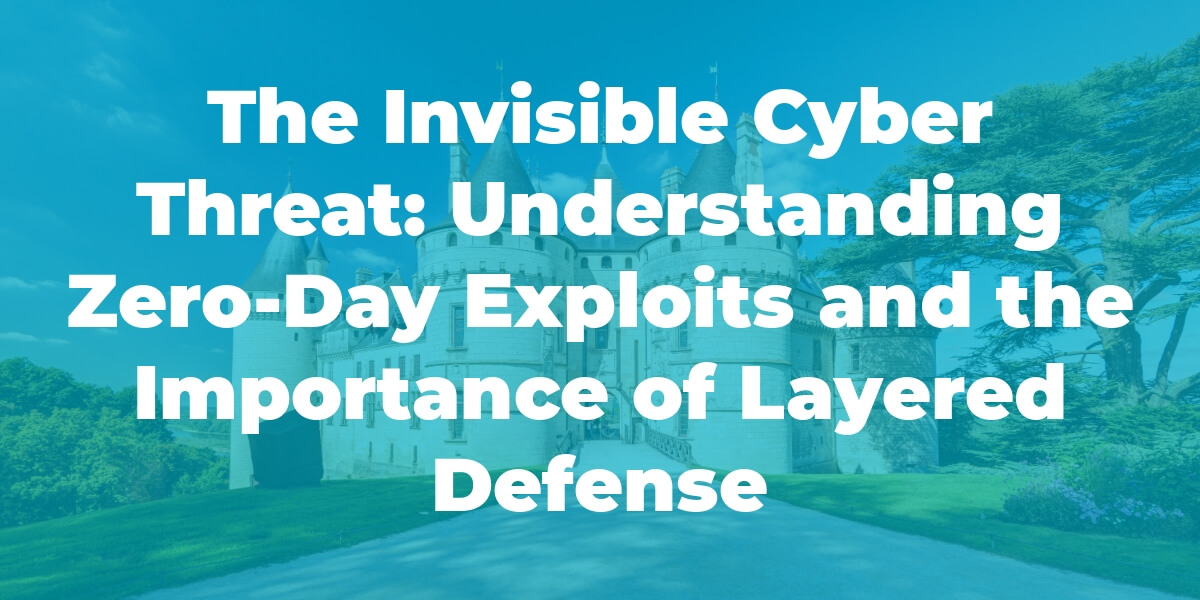In an era where the digital world has become deeply intertwined with our everyday lives, cybersecurity is no longer just about protecting our computers or smartphones; it’s about safeguarding our identities, our privacy, and for businesses, their valuable data and intellectual property. Zero-Day exploits pose a particularly formidable challenge among the myriad of cyber threats. But what exactly are Zero-Day exploits, and why are they such a critical concern?
What are Zero-Day Exploits?
A Zero-Day exploit is like a thief finding an unknown secret passage into a fortified castle. In cybersecurity terms, it's a software vulnerability that has yet to be discovered by software developers. Cybercriminals exploit this vulnerability before the developers become aware of it and have a chance to fix it - hence the name 'Zero-Day.’ These exploits pose significant risks because they can be used to bypass standard security defenses, much like a hidden entrance bypassing a castle's walls and moat.
The Risks Posed by Zero-Day Exploits
Consider an operating system (OS), the core software that powers our computers, servers, and mobile devices. It's like the central nervous system of these devices. A Zero-Day exploit in an OS could allow a cybercriminal to sneak malicious software (malware) past standard protections, much as a castle infiltrator could sneak past the guards using a secret passage.
The consequences can be severe. Once inside, cybercriminals can steal sensitive information, disrupt operations, or even gain control of the entire system, all while staying hidden from the standard defenses.
Layered Defenses: Your Cybersecurity Castle
Thankfully, just as a well-defended castle doesn't rely on its outer walls alone, a robust cybersecurity strategy also employs a layered approach to defense. Here's why it's crucial:
Imagine you've detected an infiltrator in the castle. What if you could track their movements, observe their actions, and have a team ready to respond at a moment's notice? This is akin to continuous logging, threat hunting, and having a dedicated Security Operations Center (SOC) team in the cybersecurity world.
Continuous Logging & Security Information and Event Management (SIEM)
Continuous logging is like having security cameras throughout the castle. Every activity on a system is recorded, providing a detailed account of what's happening within. SIEM systems analyze these logs, identifying potential threats like a vigilant eye scanning security footage for suspicious behavior.
Threat Hunting and Indicators of Compromise (IoCs)
Threat Hunting isn't just about looking for trouble; it's about knowing what signs to look for. This is where Indicators of Compromise (IoCs) come into play. IoCs are tell-tale signs that an infiltrator leaves behind. They could be footprints in the castle's garden, a piece of unfamiliar clothing, or a strange sound in the night.
In the cybersecurity world, IoCs are pieces of evidence that a cyber attack may have occurred. These can take many forms, including unusual network traffic, suspicious log entries, unfamiliar files on systems, or unexpected changes in system behavior.
Armed with a list of known IoCs, threat hunters proactively scan and monitor networks and systems. They use advanced tools and techniques to look for these signs, helping to catch potential threats before they can cause significant harm. The more IoCs a threat hunter is aware of and understands, the more effectively they can identify and respond to threats.
Security Operations Center (SOC) Team: The Collaboration with Threat Hunters
In a well-fortified castle, just as guards, watchmen, and soldiers work together to ensure safety, the Security Operations Center (SOC) team and the Threat Hunters form a critical alliance in the world of cybersecurity. The SOC team acts as the castle's command center. They're like master strategists, constantly monitoring the battleground, responding to alerts, and coordinating defensive measures. They rely on a steady stream of information to make informed decisions, and one of their most valuable sources of intelligence is the Threat Hunting team.
When Threat Hunters identify Indicators of Compromise (IoCs), they don't just document and move on. They communicate their findings to the SOC team. This collaboration is pivotal, as it allows the SOC team to understand the nature of the threat, its potential impact, and how best to respond.
Conclusion: The Unified Front Against Cyber Threats
Cybersecurity is a complex field, but understanding its key components and how they interact can shed light on how we protect our digital domains. Zero-Day exploits, akin to undiscovered secret passages into our castle, pose a formidable threat. However, just as a well-defended castle doesn't rely on a single wall, a robust cybersecurity strategy employs a layered defense, ensuring no single point of failure.
Don't leave your defenses to chance. Contact us today, and let us help you build a stronger, more secure future for your business. Because when it comes to cybersecurity, you deserve a partner who understands your needs and is dedicated to protecting your interests. Let's face these challenges together - one layer at a time.
Your Cybersecurity Partner
Navigating the vast landscape of cybersecurity can seem daunting. But remember, you're not alone in this journey. Our expert team is ready to support you every step of the way. We understand businesses’ challenges in maintaining robust cybersecurity defenses and are committed to helping you protect your digital castle.
Whether you're looking to strengthen your defenses, educate your team, or understand your business’s risks, our professionals are here to assist. We invite you to take the first step towards bolstering your cybersecurity posture by taking advantage of a free cybersecurity risk assessment. Contact us today.
